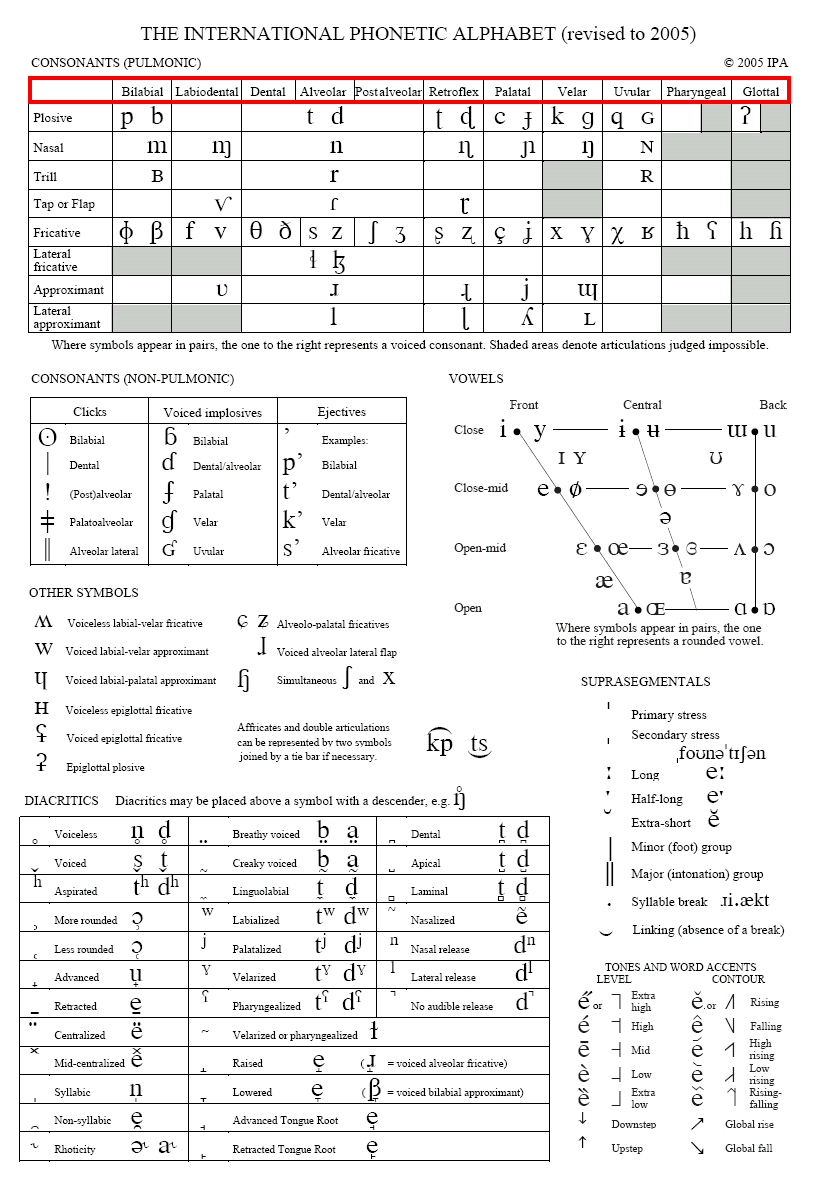Before we begin learning letters, we need to have a better understanding of the IPA chart.
First, the symbols on the IPA chart are not letters. The problem with letters is that they can represent a lot of different sounds. For example, look at the letter 'e' following words:
- pen
- enough
- bide
The letter 'e' has a different sound in both the first one and two, and in the third word, 'bide', the 'e' is completely silent!
So when we learn about the sounds of English, I will not talk about "letters". We will instead talk about 'symbols'. Here are the same words written in IPA symbols:
- /pen/
- /ɪˈnʌf/
- /baɪd/
As you can see, the 'e' in the first word is represented by the symbol /e/, by the symbol 'ɪ' in the second word, and isn't even shown in the third word.
If you are confused, don't worry! Just remember that letters of a word are different than IPA symbols.
How to Read the IPA Chart - Consonants
If you look at the IPA chart, you will see a table on top that represents all of the consonants of English. On the top, you will see a row that says "Bilabial, Labiodental, Dental" etc. Each of these words describe a different part of the mouth.
On the left side of the chart there is a column that says "Plosive, Nasal, Trill" etc. Each of these words describes how the sound is said. Think of the different
between the first sounds in the words "how" and "bear". Your mouth is doing very different things to make those sounds.
We will talk about these lists in greater detail later; what is important to remember is that IPA symbols each represent only one sound, and the position on the chart shows where in the mouth it is made, and how it is made.
There is just one last thing to talk about before we can start discussing the individual symbols.
Voiced vs. Voiceless
Look at the chart and find the box that represents the "Bilabial Plosives".
If you look closely, you will see that two different symbols: /p/ and /b/. So what is the difference between these symbols?
The difference is that /p/ is a so-called "voiceless" sound, and /b/ is a "voiced" sound.
What does that mean?
To understand the difference, put you hand lightly on your throat. Now start talking. When you are talking, you can feel your throat vibrating. When you stop talking, the vibration stops.
If you speak slowly, you will notice that some sounds do not vibrate your throat when you say them. For example, say the word 'how'. You will notice that the /h/ in the word does not vibrate you throat. That sound is a voiceless sound.
Here are some words that start with voiceless sounds:
- how
- teach
- fish
- create
Here are some words that start with a voiced sounds:
- ouch
- ditch
- veteran
- great
Conclusion
Here are the important points to remember:
1. IPA symbols are not letters. IPA symbols represent one sound, while letters often represent a lot of different sounds.
2. The location on the IPA chart shows where a sound is produced (the top row), and how it is produced (the left column).
3. If there are two symbols in one box on the chart, the first symbol is a voiceless sound, and the second is a voiced sound. Voiceless sounds do not vibrate your throat, while voiced sounds do.




No comments:
Post a Comment